1941: Riverside
April 23, 2019
By AHNZ

What becomes of the Social Justice Warriors when their wave crests? History’s wheel keeps turning and those who were once in the sun grab hold of each other as it sets. Perhaps that is what this logo for the Riverside Community at the top of the South Island shows? Two figures reach out to one another over a river before a setting sun (or would they say rising?)
Victimhood Culture Life Pods
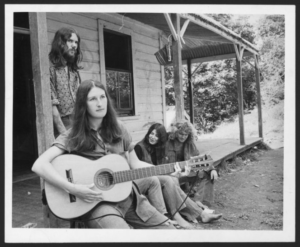 What did the student protesters and Hippies of the late 1960s do when their number was up? When society changed and history moved on from them they made an exodus into the wilderness trying to start up their own society. For a while, New Zealand became dotted with little Kiwi Kibbutz communities. Eg. Chippenham, Jerusalem, Gibraltar Crescent, Waimarama, The Avon Loop. The State even made it easy, creating the Ohu Scheme.
What did the student protesters and Hippies of the late 1960s do when their number was up? When society changed and history moved on from them they made an exodus into the wilderness trying to start up their own society. For a while, New Zealand became dotted with little Kiwi Kibbutz communities. Eg. Chippenham, Jerusalem, Gibraltar Crescent, Waimarama, The Avon Loop. The State even made it easy, creating the Ohu Scheme.
The K-selected Moral Cultures of the eighties and nineties spawned many new escape-pod communes such as Centrepoint, Earthsong, and Aradia Wimmin’s Community as well as swelling the ranks of surviving communities from the previous iteration 20 years before. The Occupy Movement of 2011 was also a burst of expression of the same energy in a different form and by c.2030 it will all be well under way again.
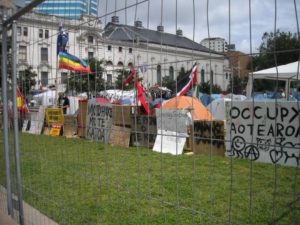 Exiled from the mainstream, what do the Victimhood Culturalists do with all that moralistic controlling energy? While in power they delight in banning books, words, thoughts, fashions, foods, drugs, alcohol. Depending on the era, they invent a new Politically Correct speech and make war and protests actions against things like plastic bags and power stations. These dethroned VC people become fetishistic about saving animals, eating the right foods, rescuing the planet from the evils of pollution and over-population and CO2 and capitalism. Being part of the protected class and r-selected they advocate anti-violence, are anti-gun, and insist on sharing work and resources communistically; This often also entails sharing romantic partners as you would expect from a group that blanks out human individuality.¹
Exiled from the mainstream, what do the Victimhood Culturalists do with all that moralistic controlling energy? While in power they delight in banning books, words, thoughts, fashions, foods, drugs, alcohol. Depending on the era, they invent a new Politically Correct speech and make war and protests actions against things like plastic bags and power stations. These dethroned VC people become fetishistic about saving animals, eating the right foods, rescuing the planet from the evils of pollution and over-population and CO2 and capitalism. Being part of the protected class and r-selected they advocate anti-violence, are anti-gun, and insist on sharing work and resources communistically; This often also entails sharing romantic partners as you would expect from a group that blanks out human individuality.¹
If New Zealand history really is one big circle then we should expect this pattern (late 1960s, 1990s, 2010s) in a 1940s equivalent.
Hubert’s Orchard

The annual Riverside Founders Day is observed on 1 September marking their official beginning in 1941; So, 2021 is the 80th anniversary. Hubert and Marian Holdaway opened up and expanded their orchard to their fellow Christians, founding Riverside during the war years as a refuge and a base and a show-piece for pacifism and the anti-war movement in New Zealand.
In its 78th year, Riverside seems to be low in people despite periodic inflows during ‘life pod’ years. In the 1970s, for example, lots of those Hippies exiled from the mainstream funnelled in to Riverside. Today’s community still promotes the recognisable generic Victimhood Culture virtues of pooling resources, cooperation, Conscientious Objecting, anti-Capitalism, and sustainability. But that’s not how it started…
Before Riverside
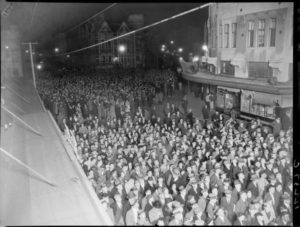 In the 1930s the Holdaways had strong in-group ties to the Methodist Church and Christian Pacifist Society. Hubert was a very well recognised teacher in the booming Bible Class movement. Marian was a/the secretary for the Youth Division of Wellington’s
In the 1930s the Holdaways had strong in-group ties to the Methodist Church and Christian Pacifist Society. Hubert was a very well recognised teacher in the booming Bible Class movement. Marian was a/the secretary for the Youth Division of Wellington’s 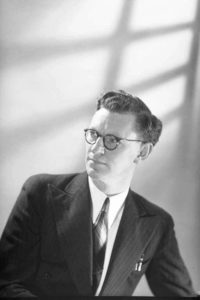 Methodists. At this time the Methodists were at the spear-head of 1930s Social Justice and New Zealand’s most famous celebrity (radio or otherwise) was Methodist Minister Uncle Scrim (image right.) Advocating for the disadvantaged, telling people not to drink alcohol, and trying to get everyone to share everything became a mainstream cause. It was a very exciting time and the Holdaways were riding high, feeling good, feeling important, feeling justified.
Methodists. At this time the Methodists were at the spear-head of 1930s Social Justice and New Zealand’s most famous celebrity (radio or otherwise) was Methodist Minister Uncle Scrim (image right.) Advocating for the disadvantaged, telling people not to drink alcohol, and trying to get everyone to share everything became a mainstream cause. It was a very exciting time and the Holdaways were riding high, feeling good, feeling important, feeling justified.
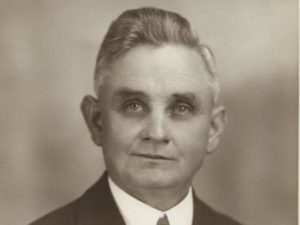 The 1935 election was one of the most exciting in New Zealand history, Goldsmith (2008) describes it as the ‘civil war of a democracy’. Michael Joseph Savage’s (image left) Labour 1.0 won power on a platform of “applied Christianity.” The Huberts and their clique must have felt like Oprah at Obama’s inauguration. All good things must come to an end though and the storm clouds of World War 2 were gathering.
The 1935 election was one of the most exciting in New Zealand history, Goldsmith (2008) describes it as the ‘civil war of a democracy’. Michael Joseph Savage’s (image left) Labour 1.0 won power on a platform of “applied Christianity.” The Huberts and their clique must have felt like Oprah at Obama’s inauguration. All good things must come to an end though and the storm clouds of World War 2 were gathering.
Riverside: The First 80 Years
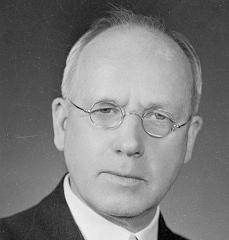 After 1937 New Zealand’s mainstream became increasingly Honour Culture, as demonstrated by a Physical Culture craze, culminating in the declaration of war in September 1939. The Holdaways’ darling, Prime Minister Savage, died in office in 1940 to be replaced by Peter Fraser (image right.) Contentious Objectors like the Holdaways counted on Fraser who had, after all, once been one of them but were desperately let down when, as Prime Minister, he supported conscripting men to war. Savage dead in March, Tomorrow smashed in May. By September of the same year, Riverside was established.
After 1937 New Zealand’s mainstream became increasingly Honour Culture, as demonstrated by a Physical Culture craze, culminating in the declaration of war in September 1939. The Holdaways’ darling, Prime Minister Savage, died in office in 1940 to be replaced by Peter Fraser (image right.) Contentious Objectors like the Holdaways counted on Fraser who had, after all, once been one of them but were desperately let down when, as Prime Minister, he supported conscripting men to war. Savage dead in March, Tomorrow smashed in May. By September of the same year, Riverside was established.
Initially it became a home for the cultural refugees. Perhaps it was a place from which to fight the anticipated 1941 election except that by October it had been cancelled by Labour 1.0. Men locked up in Conchie Camps had somewhere to go when they got out, their wives and families had somewhere to stay while husbands were locked up for being or even simply advocating Pacifism. Holdaway was the patriarch, holding the line for Riverside as a community of Victimhood Christianity. For example, there was to be no alcohol and lots of hard work.
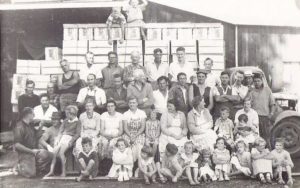
In the year 1972 Riverside dropped the requirement for members to be Christian at all. Hubert Holdaway had died in 1963 anyway so in flooded the latest wave of Escape Pod Victimhood Culturists. These Hippies were no Christians.
By 1991, Year 50, Riverside seemed to get another shot in the arm with the next wave of migrants. They even made it to prime time TV on Country Calendar. Eighties Victimhood Culturists had no chance at being in the mainstream in this era of what Anarchist History records as the decade dominated by KZ7 Honour Culure and Krypton Factor Dignity Culture. We may assume a similar refreshing tide c.2011 which introduced such observations as Matariki and Parihaka to the SJW-in-hiding programme.
Today there’s little use for Riverside and they’re down to 25 members and 35 itinerants. There is a bounty of vocations for Social Justice Warriors, food activists, and pacifists in our mainstream corporate, political, and academic worlds so why leave the mainstream for an intentional community?
The clock says the tide is turning on our mainstream Victimhood Culture though. When VC people you know start signalling that they might like to found or move to a place like Riverside it means they’re giving up. When they actually do leave the Honour Culture will have returned to mainstream status.
—
1 Having multiple partners also makes sense from an evolutionary biology standpoint. Having made the exodus from mainstream society, the exiles founding their new community would have a survival advantage in having a drive to have lots of babies to grow their society’s population. Of course this is all rationalised by the society/cult after their own fashion. They would no more know why they had this drive to obey than a tea leaf knows the history of the East India Company.
image ref. Members of the Jerusalem commune established by James K Baxter; Alexander Turnbull Library
image ref. Riverside logo; Riverside Community on Facebook
image ref. Crowd looking at the 1935 general election results, Wellington; Alexander Turnbull Library
image ref. Occupy Auckland; Libcom
image ref. H. Holdaway; Alexander Turnbull Library, Ann Chant Collection; Te Ara
image ref. Members and Packers; Riverside 1960s; Riverside.org.nz
Riverside; Country Calendar (1991)
One Day at Riverside; Frank (2019)
Update: Edited post. Corrected self from saying it was the 80th year when it’s not yet. Not by their count. In truth the enterprise could be dated at 80 by now but by their count..1941 is the start up. Sociologist Arnold Palmer put it at 1938 I believe..
 Like Comment Share
Like Comment Share





